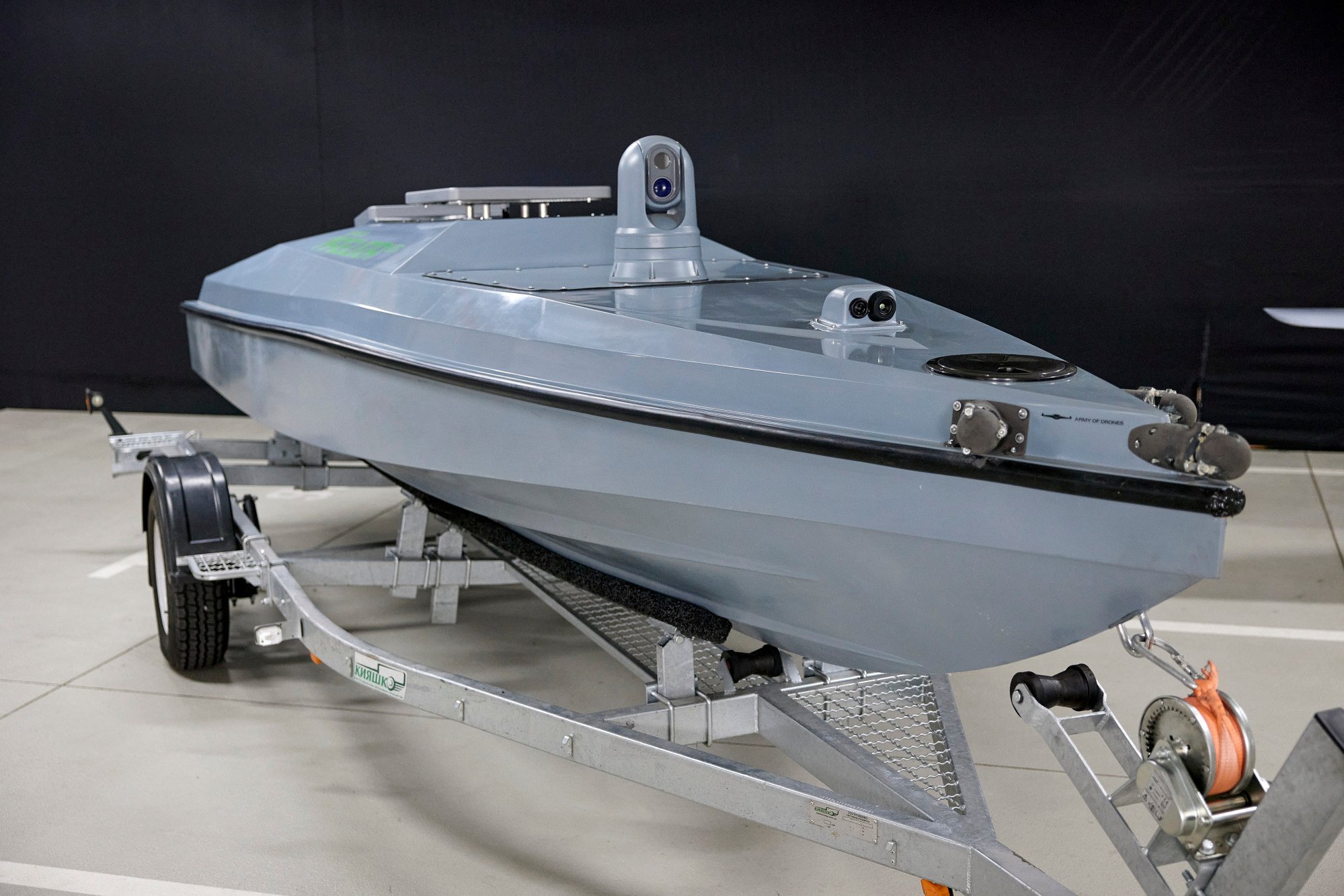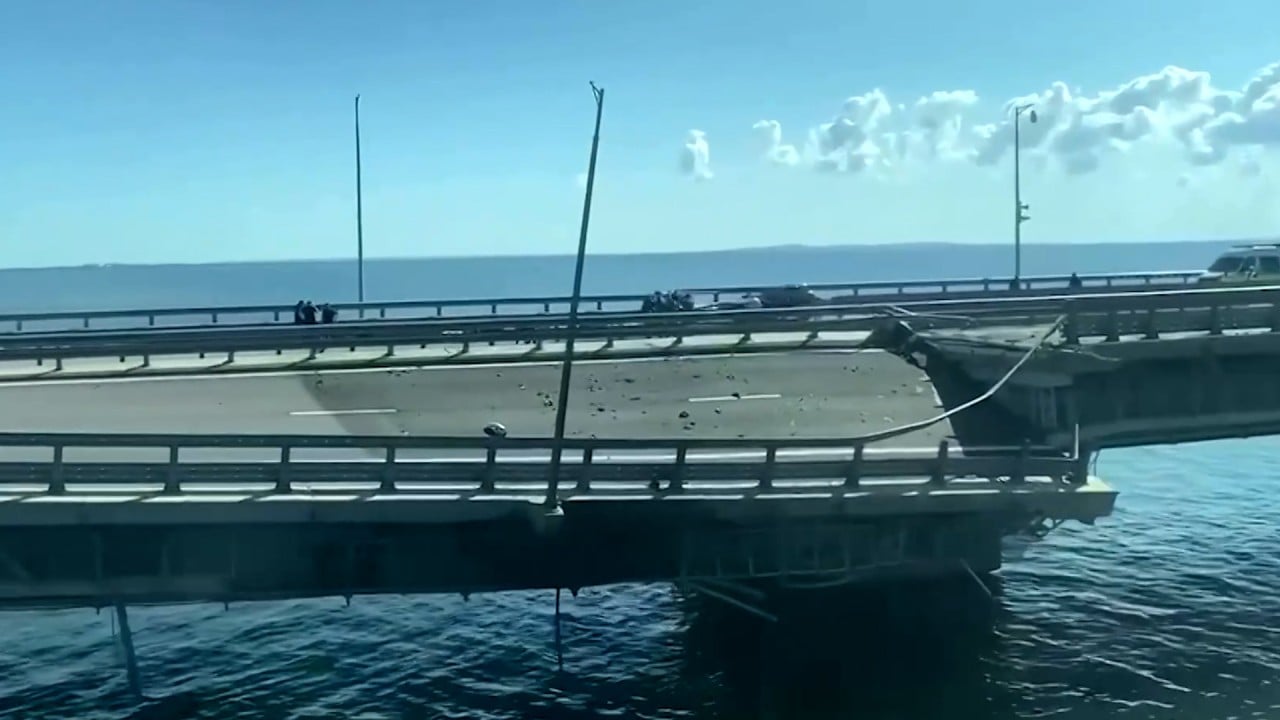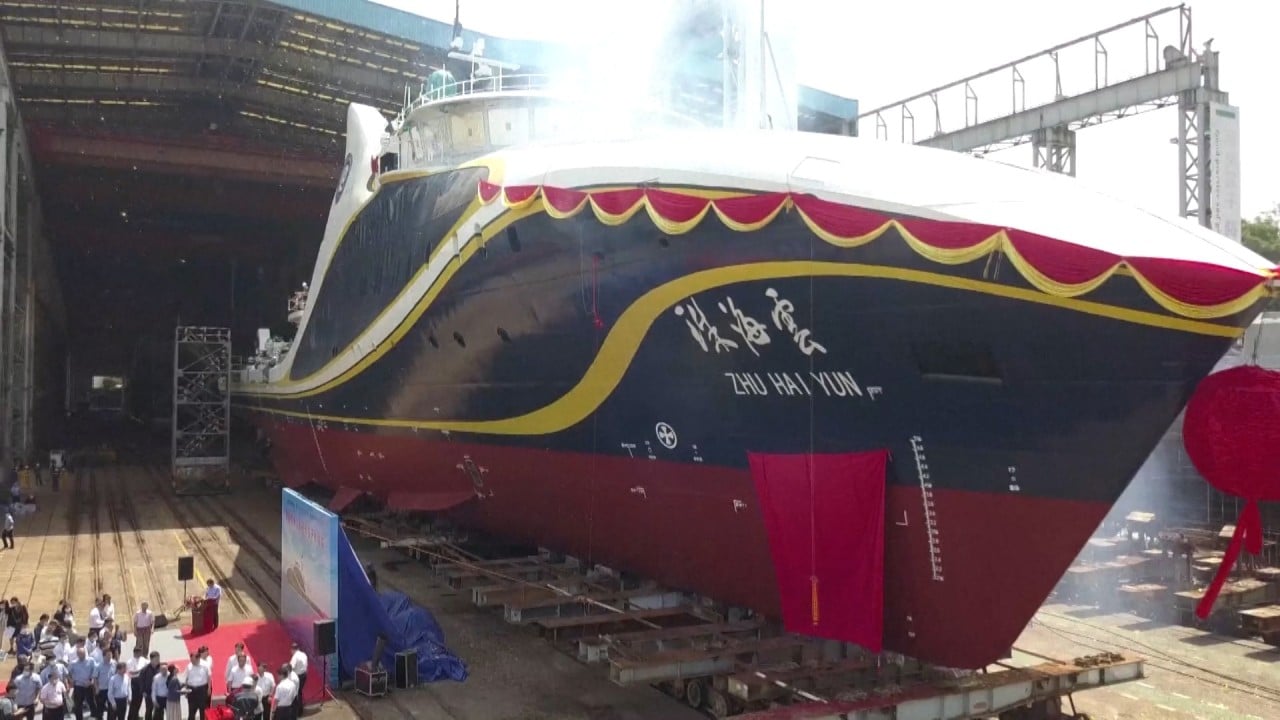
Ukraine’s unconventional drone tactics offer Taiwan defence hope, but has it been too slow to adapt?
- Ukraine’s drones have taken a heavy toll on Russian ships and ports, offering valuable lessons in asymmetrical warfare
- While sea control may be gained without stronger warships, Taiwan’s defence industry still relies heavily on US support
Over the course of Russia’s invasion of Ukraine, the battle for control at sea has repeatedly tilted in Kyiv’s favour. Without warships of its own, Ukraine has sunk or disabled several vessels from the vaunted Russian navy using only drones. Has the conflict signalled a new era in battle tactics, and are there lessons for Taiwan?
Asymmetrical warfare
Remote-controlled unmanned boats were first used in warfare in World War II. In the decades since, many countries have advanced the technology.
Since the war broke out in 2022, Ukraine claims to have sunk or damaged 24 surface ships and one submarine – a third of the Russian fleet – with many of the attacks carried out by its sea drones. The latest hit was in early March when naval drones sank Russia’s newest patrol ship, the Sergei Kotov.

The 1,300-tonne vessel, which was launched in 2021, was destroyed by a group of Ukrainian Magura V5 drones, or “maritime autonomous guard unmanned robotic apparatus V-type”. The 1-tonne weapons are 5.5 metres (18 feet) long, battery-powered, and can carry up to 800kg (1,764lbs) of explosives.
They are demonstrating that control of the sea could be obtained without stronger warships
Ukraine has also deployed sea-based drones and conducted successful attacks on key Russian infrastructure such as vital ports and the Kerch Bridge to Crimea. Such efforts enabled the partial resumption of Ukraine’s essential grain exports by sea which had been hampered by the Russian navy.
“Ukraine’s tactics are surely inspiring to all navies,” said Shanghai-based military analyst Ni Lexiong. “They are demonstrating that control of the sea could be obtained without stronger warships.”
Halfway around the world, the Taiwan Strait has become a potential flashpoint that observers fear may draw in the United States. As relations with Beijing have soured, Taiwan, whose military muscle is clearly no match for that of the People’s Liberation Army, has increasingly looked to the US for weapons and support.
“All parties need to advance their own asymmetrical capabilities,” Ni said.
The Beijing scenario
Beijing sees Taiwan as a breakaway province to be reunified by force if necessary. The US, which is committed to supplying the island with weapons, and most of its allies do not recognise the self-governed island as an independent state but oppose any attempt to use force to change the status quo.
Beijing, however, has not renounced the use of force, insisting that reunification is an “internal affair” and that any interference by external forces must be prevented.
For nearly three decades, the PLA has been building anti-access/area denial (A2/AD) capabilities.
The Zhu Hai Yun made an appearance in the Taiwan Strait late last year when it sailed around the island and crossed into Taiwan’s 24 nautical mile contiguous zone.
According to a report in February by the Washington-based think tank Centre for Strategic and International Studies, the ship was equipped with advanced instrumentation for military/civilian dual-use.
In the case of a military campaign against Taiwan, it is expected that the PLA’s unmanned surface and underwater fleets would be deployed in the western Pacific as part of an A2/AD line.
Loaded with missiles or loitering munition, these drones would carry out patrols and intercept and attack foreign warships and submarines – likely from the US Navy – preventing them from reaching the island.
More drone fleets could be configured with various functional payloads to assist in other PLA operations, such as minesweeping, electronic warfare, ground attacks or simply decoys.
According to an article published in the military mouthpiece PLA Daily last year, the unmanned boats will be integrated into the combat system in three battle modes: “swarm” – a mass attack that overwhelms the enemy with sheer numbers; “hound” – in which the weapons are controlled by crewed ships in assisting roles; and “drone clusters” – where autonomous task groups consisting of USVs, UUVs and Unmanned Aerial Vehicles (UAVs) are deployed for long-term surveillance missions, reconnaissance and attacks.
The US scenario
“There are battlespaces where it may not be necessary to contest air and maritime superiority one for one, but simply to deny its use to an enemy that wants to use that battlespace for its own purposes,” Paparo said.
While the USVDIV-1 mainly experiments with medium and large USVs, the second division will focus on smaller surface vessels, and defence contractors have been asked to make pitches for small, lethal surface drones.
Last year, the US Department of Defence announced an ambitious “Replicator Initiative”, which is focused on “fielding thousands of autonomous systems across multiple domains within two years”. The first tranche of the drones were reportedly selected in March.
The initiative is “part of the Pentagon’s strategy to counter China’s rapid armed forces build-up,” according to Kathleen Hicks, the deputy secretary of defence.
Taiwan races to catch up with mainland China’s military drone capabilities
In the event that the PLA launches a mass amphibious invasion across the Taiwan Strait, the US sea drones and loitering munitions could play a key role in disrupting Beijing’s landing plan, according to the Pentagon.
Ni said: “In an amphibious landing operation, the troop embarkation, ship crossing and beach arrival are the three most vulnerable points and could be easily targeted and damaged by either drones or missiles.”
The Taiwanese scenario
If the PLA Navy carries out an amphibious operation on the island, remote-controlled Taiwanese maritime drones would also form one of multiple lines of defence, mainly targeting incoming warships or those near its coastline, since the island’s small and antiquated warships are no match for such attackers.
Inspired by Ukraine’s successes against the Russian navy, Taiwan’s defence industry has also ramped up mobilisation, though it still relies heavily on US supplies.
In terms of quantity and quality, [Taiwan] has already fallen far behind even some third world countries
The National Chung-Shan Institute of Science and Technology, the island’s government-owned institution for weapons development, has launched a two-year, NT$812 million (US$25 million) “unmanned attack vessel” development programme, which is expected to begin production of at least 200 boats in 2026.
The boats – which are under 4 tonnes, less than 10 metres long, and will have a draft of up to 0.5 metre – could be remotely controlled from up to 70km (43.5 miles) away.
According to local media reports, they would be operated by the island’s land force and deployed for suicide attacks against PLA vessels.
Taiwan is developing another, bigger and more lethal suicide drone
But as a latecomer to the drone era of warfare, Taiwan has been slow to adapt, according to Macau-based military expert Antony Wong Tong.
“In terms of quantity and quality, [Taiwan] has already fallen far behind even some third world countries. Without the support of US unmanned weapons, the situation would be completely one-sided [to Beijing’s advantage],” Wong said.




